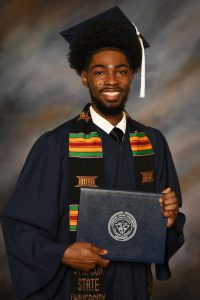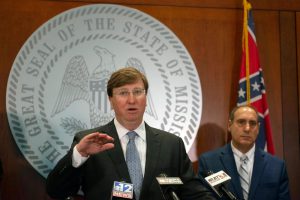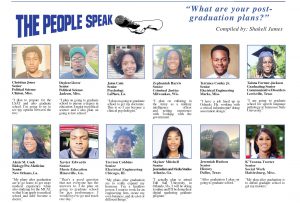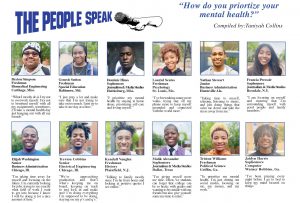Cameron Adams
Editor-In-Chief
Writing an article about the March on Washington is somewhat of a full circle moment for me. When I was in middle school, I had the honor of being chosen to recite Dr. Martin Luther King’s iconic “I Have a Dream” speech for a Black History program.
At the time, I did not think it was that big of a deal. I was more thrilled about the free cookies I got for being a participant.
As time went on, the more distant the memory became, the more I realized how much his speech impacted not only African-Americans, but for every race in the world.
His speech, delivered at the Lincoln Memorial, remains a timeless testament to the power of hope and nonviolent resistance.
His words painted a picture of a peaceful nation, using the colors of all races.
“When we allow freedom to ring, when we let it ring from every village and every hamlet, from every state and every city, we will be able to speed up that day when all God’s children—black men and white men, Jews and Gentiles, Protestants and Catholics—will be able to join hands and sing in the words of that old Negro spiritual: ‘Free at last! Free at last! Thank God Almighty, we
are free at last!”
I remember studying for my speech and listening to those words over and over again. Hearing the passion behind those final words, “Thank God Almighty, we are free at last” ignited a newly found appreciation for Dr. King and his vision.
He truly believed that there was a world where people would be judged by the content of their character, not the color of their skin. This message continues to inspire generations of activists and dreamers fighting for a more just world.
The March on Washington was a rallying cry that could be heard across the globe. It was a vision so powerful that people could not help but to take a look through his lens.
These days it is fairly simple to send a message across the world, thanks to the development of social media. All you have to do is click a button to send a message.
Dr. King had to get the attention of news channels and radio stations in order to inform the world of his message. No hashtags or viral trends to his advantage.
All he had was a dream for people to unite together and fight for equality. Although his dream was powerful enough to change the world, I feel as if it has yet to be fulfilled.
While significant progress has been made, systemic racism and injustice persist. The march reminds us that the pursuit of King’s dream requires more than a speech.
In order to fulfill his dream, it is going to require active participation, and a commitment to dismantling the structures that were built on inequality.
His speech serves as a reminder that systemic racism is still prevalent in our society. A reminder that we have not yet achieved true freedom to his definition.
“We cannot be satisfied as long as the Negros basic mobility is from a smaller ghetto to a larger one. We can never be satisfied as long as our children are stripped of their selfhood and robbed of their dignity by signs stating: for whites only.
We cannot be satisfied as long as a Negro in Mississippi cannot vote and a Negro in New York believes he has nothing for which to vote.”
According to these words, we have been trapped in a modern-day version of what used to be.
Although there are not any signs that dictate where we should sit, there are unspoken signs that indicate where we are and are not welcome.
People of Mississippi still feel as if their votes hold no significance. Our historically black colleges are underfunded despite producing some of the brightest minds of the world.
Dr. King’s speech continues to hold weight in Civil Rights history. As we continue to grapple with the challenges of race and inequality, the lessons and legacy of the march remain as relevant and vital as ever.






Be First to Comment